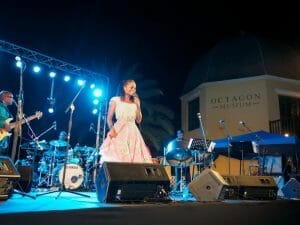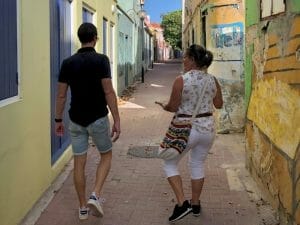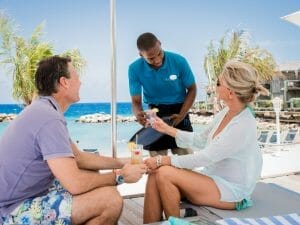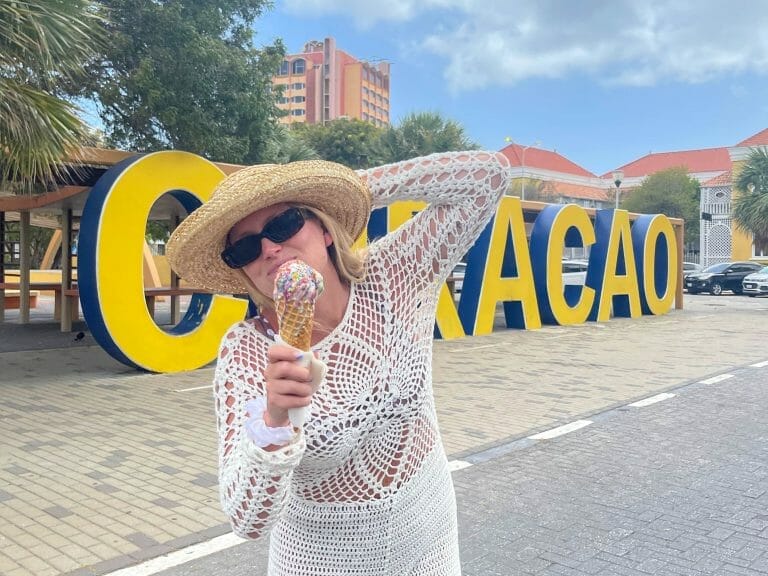Curacao is much more than just sun, sea & beach. The beautiful and sun-drenched island has a unique charm. Curacao has a rich culture and history. Check out the 5 best cultural activities in Curacao to fully discover the island.
You Might Also Like:

Fun facts & goofs Narcos about Curacao
Taste the Curacao culture by tasting dishes, snacks, and other refreshments
Whoever thinks of Curacao thinks of the paradisiacal white beaches, but did you know there are also delicious (Krioyo) delicacies? There is more than Blue Curacao, Amstel Bright, and Brasa beer worth tasting. Think, for example, of the Arepa di pampuna (pumpkin pancakes), Cheese balls (perhaps even better than bitterballen), Awa di lamunchi (lime water), Keshi yena, Johnnycake (fluffy fried flatbread), Pastechi (a pasty) with cheese, tuna, chicken or ground beef and Stobá (stew).
There is no accounting for taste, but we are sure that Curacao delicacies are to your liking! There is also Sop'i guiambo / jambo (okra soup) or Sop'i yuana (iguana soup) for the adventurous gourmands. You experience the Curacaos culture best when you taste it. Your local waitress or chef will be happy to tell you about the origin and history of the dish when you order it.



Experience the Curacao culture through music
In Curacao, a life without music is almost unimaginable. The beat of music runs through the locals' veins, and their hips almost automatically swing along when they hear music. Music streams such as Salsa, Merengue, Bachata, Kizomba, Blues, and Latin Jazz may be familiar. But what is typical Curacao music?
Tambú; was mainly played for and by the ”underprivileged” in the past. Tumba; was mainly played for and by all classes. Mazurka; was mainly played for and by the middle class in the past. And the classic Wals; was mainly played for and by the “upper-class” in the past. Ritmo Kombina emerged in the late 90s and is a mix of different Latin music genres from the past and is the pop music Curacao. Famous local music bands in this genre are Era, Dreams, Cache, and One Flavaz.



Discover the murals during a walking tour
Where can you find the most beautiful murals? Where does the term 'Kabe'í Boto' come from; it means hitchhiking, but it's translated as the head of the boat. How do you play a typical Curacao traditional musical instrument, the Ka'i Orgel (cylinder piano), and why is the floor of the Mikvé Israel-Emanuel Synagogue strewn with sand?
City guide Corine Seket knows fun & fascinating facts that you can't find via Google. It is possible to choose between two routes; the Otrobanda Street Art and the alley area or Punda Window Art with Fort Amsterdam and Handelskade.



Visit museums and country houses
Curacao is home to a wealth of cultural heritage. If you drive from the airport to your accommodation, you will undoubtedly pass numerous museums and beautiful country houses. The history of the island of Curacao goes back thousands of years to the time when the Indians inhabited the island. Slavery is a striking part of history.
The country houses, also known as plantation houses, are a visible remnant of this time. Most country houses now function as museums or galleries; the view from the country houses is often beautiful. Landhuis Jan Kok, Landhuis Knip and Landhuis Bloemhof are really worth a visit.



Connect with the locals by learning Papiamento
If you want to befriend a local, there is a magical way to do it. Immerse yourself in the native language of Curacao, Papiamento. The official languages in Curacao are Dutch and Papiamento. In addition, almost everyone speaks English and Spanish. The name 'Papiamento' comes from the Papiamento word 'papia' and means 'to speak'. Show an effort to learn a few words of Papiamento and try to converse with locals in Papiamento. It’s the key to conquering Curaçaoans’ hearts. It doesn't necessarily have to be sentenced; just a few words are sufficient. Examples of some words in Papiamento:
Bon dia: Good morning
Bon tardi: Good afternoon
Bon nochi: Good evening
Ayo: Bye
Danki: Thank you
Hopi bon!: Very well!
Kon ta bai?: How are you?
E ta dushi: It is delicious
Mi por hanja: May I (if you order something)



You Might Also Like:







